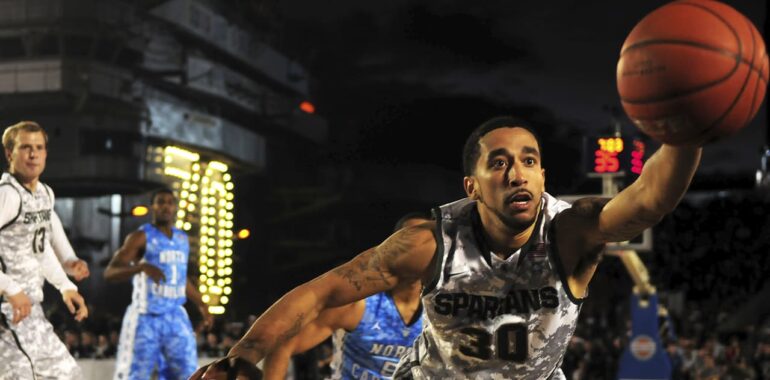The rules of basketball

The rules of basketball
Basketball is one of the popular sports in the world today. Everyone who is interested in this sport should understand and know the rules of basketball. Throughout the history of the sport the rules of basketball have changed and been amended. In our article we will talk about the official FIBA rules.
There are two teams in a game. The objective of each team is to throw a basketball as many times as possible into the opponent’s basket and to prevent the opponent from gaining possession of the ball and throwing it into the opponent’s basket. The height of the basket (basketball hoop) is 3.05 meters from the floor.
For each ball thrown from different distances, a different number of points is scored.
From medium and short range – 2 points, for throwing the ball from long range team gets 3 points, and from the free throw team will get 1 point. The court on which basketball is played has the following dimensions: width 15 meters, length 28 meters.
A basketball match starts with a throw-in in the middle of the court. As soon as one of the players touches the ball, the time is counted. A separate referee, the “timekeeper”, monitors the time. His authority includes stopping time on the whistle and resuming it. The match consists of 4 periods of 10 minutes each. The breaks between periods are 15 minutes.
Three-point zone
Each team is allotted only 24 seconds to make an attack. However, there is also a “three-second zone. “The three-second zone is the opponent’s zone, in which the player of the team who attacks for not more than 3 seconds in a row is allowed to stay. There are also rules such as “Five Seconds” and “Eight Seconds”. The Eight Seconds Rule is a rule that limits your team’s action in the rear area. When a team receives the ball in the rear area, the team has eight seconds to move the ball to the front area, essentially starting an attack. The Five-Second Rule is a rule that restricts a player from passing the ball, provided he is tight-footed.
A tie in basketball is not allowed. In this case, additional or additional overtime periods are scheduled until one team can take the lead. Each overtime period lasts 5 minutes.
During the game, there are moments when opponents both players from different teams hold the ball with both hands and do not concede to each other. This moment is called a contested moment. This is resolved by throwing the ball between the two players.
An out is when a basketball is outside the court. Out involves throwing the ball into play after determining which player on the team the ball came from. If it is not possible to determine, the ball is in dispute and is thrown in. The ball goes to the team from which the ball did not go into touch.
During a game of basketball, the technique of running the ball is clearly monitored. There are restrictions in the rules. So, after dribbling the player is allowed only two steps with the ball in his hands without hitting the ball on the floor. The player must either pass the ball to a partner or throw it around the ring. If the player continues to move, this again is an infraction and is called “double dribbling”. In both of the above cases the offense is punished by passing the ball to an opponent.
Laws of dribbling
If a player does not hold the ball and continues to knock it on the floor, while being stationary, and after 3 or 4 seconds continued to move, it is not an infringement. Entering the ball with both hands is prohibited, as is hitting the ball with your fist. The ball may be carried with both right and left hands. If you violate the ball is punished by passing the ball to an opponent.
Substitutions. Substitutions are possible when the game is stopped. The number of substitutions is not limited. As a rule, there are 7 players on the bench.
Basketball is an emotional and inspiring game. Naturally, without scuffles and fights this game does not do. For such violations a technical foul is awarded and punished by a free throw from 6 meters. Penalty shot can be made by both the victim and a teammate.
If a fight occurs, it is a serious violation and is punished by disqualification of the player until the end of the game, but with the right of replacement.
In general, during the game there are a lot of skirmishes and fouls. A warning is given for each foul. A player can get no more than 5 warnings during a game. After that, the player is disqualified until the end of the game, but again, with the right to substitution.
During the game the referees communicate with each other using gestures. They use numbers 1, 2 or 3. These numbers may assign the number of free throws for a foul. To avoid confusion, teams do not have player numbers from 1 to 3.